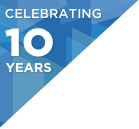Conference: Nov 13-15, 2017
Workshops: Nov 16-17, 2017
Track: UX Reimagined
Location:
- Seacliff ABC
Day of week:
- Wednesday
Virtual reality, voice, and new thought processes around design. The track explores the current art of the possible in UX and lessons from early adoption.
Trackhost Interview
Yeah, I guess one of my big claims to fame is that I was at NeXT Computer when we got merged with Apple. So it was a very exciting place to be in the technology world at a really important moment, and it was exciting to see the best of Apple and NeXT come together to create first OSX and then the iPhone. At that point, I thought it would be a great opportunity for me to step out and do professional services for these technologies.
So we ended up (Big Nerd Ranch has been around for 15 years) doing iOS development, Android development, and web stuff. We do incredible classes for some of the most powerful companies in the world.
We train at Facebook and Google and Spotify and any major successful story you can think of- we’ve probably trained them.
Aaron: We are really focused on a lot of things that are design related because of these mobile technologies. We used to just be about writing code, but more and more we have to think about the device and the problem space: how to make a design that makes them all work together properly.
Aaron: So my track is the UX Reimaged track. It’s really thinking about what the future looks like. More and more we are dealing with these new questions. Everyone has been saying that design is important. Everyone agrees that design is important, but there have been two interesting backlashes.
The first one is: it’s great that Apple mail is there, but is there a way for us to spend less time staring at our screen? Can we make technology that complements our life but doesn’t take over our whole life? When you are talking about things like conversational interfaces with Alexa or Siri (where you can ask it questions) and it’s not as intrusive, it’s a very important direction design is taking. We will be dealing with those sorts of issues.
On the other hand, the other part is that Apple (for example) has come out with elegant designs, but part of why they are so elegant is because they attacked problem spaces that are pretty simple. Apple mail is sending and receiving mail. There aren’t too many things that are easier to design than that. In the real world (when you have, say, an employment application), you may have a dozen text fields that need to be filled out. How do you still do a good design in a real complex enterprise system?
Dealing with both of these questions I think is what the next 10 years of design will be really about, and I want to be part of that discussion.
Aaron: The goal should be that (first of all) you’re thinking about the big questions. How much of our attention should be devoted to technology, but (at the same time) I want people in the group to come back and say, you know I’m working on this problem and I’ve just come up with four concrete ways that I can make it better. So the big questions should be addressed and really small improvements on what we’re doing should also be there.
by Casey Rosenthal
Engineering Manager @Netflix
Imagine a suit that is wired with tens of thousands of electrodes. Electrode bundles correspond to microservices within a system at scale. When a Site Reliability Engineer is on call, they have to wear this suit. As a microservice experiences failures, the corresponding electrodes cause a painful sensation. We call this the “Pain Suit.” It’s an absurd metaphor, but a powerful one.
It helped us to think outside of the box, and propose a new discipline that we call Intuition Engineering...
by Amber Case
Fellow at Harvard University’s Berkman Klein Center and writer of An Illustrated Dictionary of Cyborg Anthropology
Our world is made of information that competes for our attention. What is needed? What is not? We cannot interact with our everyday life in the same way we interact with a desktop computer. The terms calm computing and calm technology were coined in 1995 by PARC Researchers Mark Weiser and John Seely Brown in reaction to the increasing complexities that information technologies were creating. Calm technology describes a state of technological maturity where a user’s primary task is not...
by Molly Watt
Inclusive Technology Specialist @mollywatttrust
by Chris Bush
Head of Experience Design @Sigma
Usher Syndrome is a progressive condition and to date there is no cure. It not only affects hearing and sight but also causes considerable difficulty with mobility and communication. Molly will begin this session by talking openly about her progression with Usher Syndrome and share her views and experiences on how technology can be better designed and configured to enhance life for everyone and not just those with Usher Syndrome.
Although this is a specific condition, at some point in...
by Angie Terrell
Director of Design @BigNerdRanch, focused on Mobility & UX
At Big Nerd Ranch, we literally wrote the course on developing third-party apps for the Amazon Echo, a voice-only interface. With Amazon, Apple, Facebook, Google, and others creating SDKs for voice and messaging interfaces, it is critical to carefully design good user experiences for these conversational interfaces.
One of the most frustrating human-to-machine systems is the customer service IVR. Very few people enjoy navigating through complicated voice menus and hoping that the...
by Sophia Voychehovski
Founder and Lead UXer @Rewired
UPDATE 11/9/16: Sophia will also discuss the design challenges she faced in working to implement object-oriented UX on CNN.com's 2016 election results experience.
Chances are, you are working on a complex problem. What are designers and engineers if not problem-solvers? And what type of problem-solver doesn’t love a big chewy challenge?
But as much as we love big problems, sometimes we get in over our heads. The complexity becomes unmanageable and drives us a little crazy. In...
.
Tracks
Monday Nov 7
-
Architectures You've Always Wondered About
You know the names. Now learn lessons from their architectures
-
Distributed Systems War Stories
“A distributed system is one in which the failure of a computer you didn't even know existed can render your own computer unusable.” - Lamport.
-
Containers Everywhere
State of the art in Container deployment, management, scheduling
-
Art of Relevancy and Recommendations
Lessons on the adoption of practical, real-world machine learning practices. AI & Deep learning explored.
-
Next Generation Web Standards, Frameworks, and Techniques
JavaScript, HTML5, WASM, and more... innovations targetting the browser
-
Optimize You
Keeping life in balance is a challenge. Learn lifehacks, tips, & techniques for success.
Tuesday Nov 8
-
Next Generation Microservices
What will microservices look like in 3 years? What if we could start over?
-
Java: Are You Ready for This?
Real world lessons & prepping for JDK9. Reactive code in Java today, Performance/Optimization, Where Unsafe is heading, & JVM compile interface.
-
Big Data Meets the Cloud
Overviews and lessons learned from companies that have implemented their Big Data use-cases in the Cloud
-
Evolving DevOps
Lessons/stories on optimizing the deployment pipeline
-
Software Engineering Softskills
Great engineers do more than code. Learn their secrets and level up.
-
Modern CS in the Real World
Applied, practical, & real-world dive into industry adoption of modern CS ideas
Wednesday Nov 9
-
Architecting for Failure
Your system will fail. Take control before it takes you with it.
-
Stream Processing
Stream Processing, Near-Real Time Processing
-
Bare Metal Performance
Native languages, kernel bypass, tooling - make the most of your hardware
-
Culture as a Differentiator
The why and how for building successful engineering cultures
-
//TODO: Security <-- fix this
Building security from the start. Stories, lessons, and innovations advancing the field of software security.
-
UX Reimagined
Bots, virtual reality, voice, and new thought processes around design. The track explores the current art of the possible in UX and lessons from early adoption.




